Mastering Futures: A Comprehensive Guide to Commodity Trading Strategies and Risk Management
Have you ever wondered how major companies manage their exposure to fluctuating raw material prices, or how savvy investors seek to profit from global economic shifts beyond traditional stocks? The answer often lies in the dynamic world of commodity futures trading. This powerful financial instrument offers unique opportunities for both sophisticated risk management and speculative profit, but it comes with its own set of complexities and risks. In this comprehensive guide, we will demystify futures trading, exploring its core mechanics, diverse strategies for traders of all levels, crucial risk management techniques, and how it stands apart from other investment vehicles. Our goal is to equip you with the foundational knowledge to navigate this powerful market with greater understanding.
Understanding futures trading involves grasping several key concepts:
- The distinction between speculation and hedging, as these drive most market participation.
- The importance of contract standardization, which ensures fair and transparent trading conditions.
- The role of regulated exchanges in facilitating trades and mitigating counterparty risk.
What Are Futures Contracts and Why Trade Them?
At its core, a commodity future is a legally binding agreement to buy or sell a specific commodity at a predetermined price and quantity on a future date. Think of it as a promise, formalized and standardized. These commodities can range from precious metals like gold and silver, to agricultural products such as wheat and coffee, and energy sources like WTI Crude Oil and natural gas. Unlike simply buying a stock, a futures contract is a derivative, meaning its value is derived from an underlying asset, but you don’t actually own the physical commodity itself.
| Commodity Type | Examples | Primary Uses |
|---|---|---|
| Energy | Crude Oil, Natural Gas, Heating Oil | Fuel, industrial production, transportation |
| Precious Metals | Gold, Silver, Platinum | Investment, jewelry, industrial applications, safe-haven asset |
| Agricultural | Corn, Wheat, Soybeans, Coffee, Sugar | Food production, livestock feed, biofuel |
| Livestock | Live Cattle, Lean Hogs | Meat production |
Each of these commodity types responds to different supply and demand factors, creating diverse trading opportunities and hedging needs across various sectors of the global economy.
One of the defining characteristics of futures contracts is their standardization. This means that details like quality, quantity, and delivery time/location are precisely specified by the exchange. This standardization makes ownership easily transferable and ensures that the only variable left for negotiation is the price. Furthermore, futures are exchange-traded, primarily facilitated by regulated exchanges like the CME Group (which includes the Chicago Mercantile Exchange (CME), Chicago Board of Trade (CBOT), New York Mercantile Exchange (NYMEX), and Commodity Exchange (COMEX)). These exchanges play a crucial role by guaranteeing contracts and eliminating counterparty risk through a central clearing process, providing a high degree of market integrity and transparency.
Why do market participants engage in futures trading? There are two primary purposes:
- Speculation: Many traders, known as speculators, aim to profit from anticipating future price movements. If they believe the price of crude oil will rise, they might buy a futures contract (go long), hoping to sell it later at a higher price before expiration. Conversely, if they expect a price drop, they might sell a contract (go short), intending to buy it back at a lower price.
- Hedging: For producers, manufacturers, and other businesses, futures contracts are vital tools for risk management. A farmer growing corn might sell corn futures to lock in a price for their harvest, protecting against a potential price drop by the time their crops are ready. Similarly, an airline company might buy crude oil futures to stabilize its fuel costs, protecting against sudden price surges. This allows them to stabilize costs and revenues, mitigating the impact of adverse price fluctuations.
It’s important to understand that futures contracts have specific characteristics, often referred to as contract specifications (or specs). These include the underlying asset, the contract size (e.g., 1,000 barrels of oil), the tick size (the minimum price fluctuation), the tick value (the monetary value of one tick), trading hours, and crucial expiration dates. The Commodity Futures Trading Commission (CFTC) plays a crucial role in overseeing U.S. futures markets, preventing manipulation and ensuring fair practices, which adds to the trustworthiness of these markets.
Types of Futures Contracts
The futures market is incredibly diverse, offering contracts based on a wide array of underlying assets:
- Commodity Futures: Based on physical goods like crude oil, natural gas, gold, wheat, and coffee. Their prices are heavily influenced by supply and demand, geopolitical events, and even weather patterns.
- Equity Index Futures: These contracts track stock market indices such as the S&P 500, Nasdaq-100, and Dow Jones Industrial Average. They are typically cash-settled and are used for speculating on broad market trends or for portfolio hedging.
- Currency Futures: Allow participants to exchange one currency for another at a future date. Traded on regulated exchanges, they are influenced by interest rate differentials and trade balances, such as the EUR/USD or AUD/USD.
- Interest Rate Futures: Tied to debt instruments like U.S. Treasury securities. Their prices generally move inversely to interest rate expectations, making them a tool for managing interest rate risk.
- Single Stock Futures (SSFs): These offer leveraged positions on individual company shares without requiring actual ownership of the stock. They can be used for hedging or to gain leveraged exposure to specific companies.
- Volatility Futures: Based on volatility indices like the Cboe Volatility Index (VIX). They reflect investor sentiment about future price swings and can be used for hedging against market downturns or profiting from spikes in market uncertainty.
Beyond these broad categories, futures contracts can also vary by:
- Their delivery method: Some contracts are physically settled (requiring delivery of the actual commodity), while others are cash-settled (settled financially without physical transfer).
- Their expiration cycles: Contracts are typically available for various months into the future, allowing traders to select the desired time horizon.
- Their market size: Some contracts, like E-mini S&P 500 futures, are highly liquid and widely traded, while others may have lower volume.
Navigating the Futures Market: Strategies for Every Trader
Successful futures trading, whether for speculation or hedging, requires a well-defined strategy. The approach you choose will largely depend on your risk tolerance, time horizon, and market outlook. Let’s explore some common strategies, from beginner-friendly to more advanced techniques. 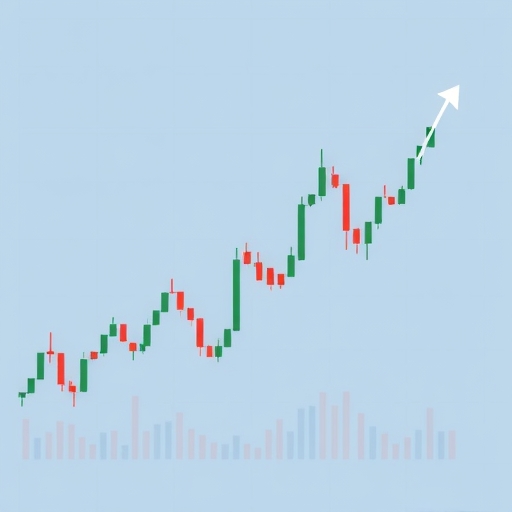
Beginner Commodity Futures Trading Strategies
For those new to the futures market, starting with simpler, more straightforward approaches can build confidence and understanding. These strategies often focus on broader market movements or historical price behaviors.
- Long-term Strategies: These involve taking positions based on the overarching, multi-month or multi-year outlook of a particular industry or commodity. For example, if you believe global demand for energy will increase significantly over the next year due to economic growth, you might take a long position in crude oil futures. This approach requires patience and a strong understanding of fundamental economic and supply/demand drivers.
- Short-term Strategies: In contrast, short-term strategies capitalize on daily or weekly price fluctuations. Day trading or swing trading fall into this category, aiming for quicker returns. While potentially offering more frequent opportunities, they also come with higher volatility and require constant market monitoring.
- Price Extremes: This strategy involves setting buy orders at historically low price ranges and sell orders at historically high price ranges for a commodity. The idea is to buy when an asset is “cheap” and sell when it’s “expensive.” However, it carries the risk that market conditions may not revert to historical norms, or a trend may continue beyond expected extremes.
Advanced Commodity Futures Trading Strategies
As you gain experience, you might explore more nuanced and aggressive strategies designed to capitalize on specific market patterns. These often require quicker decision-making and a deeper understanding of technical analysis. 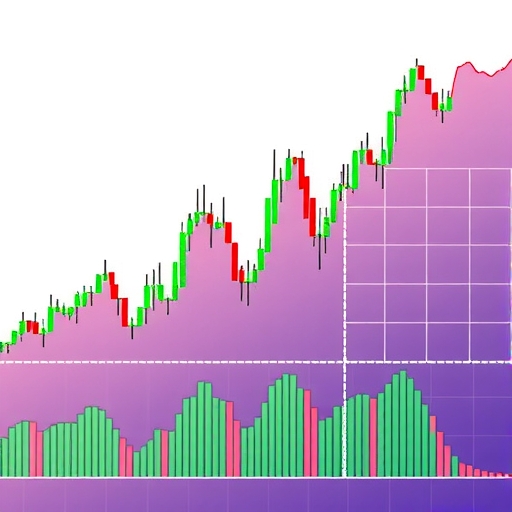
- Trading the Range: When an asset’s price fluctuates consistently within a fixed upper and lower boundary, traders can buy at the established lows and sell at the expected highs. This strategy is effective in non-trending or sideways markets, aiming to profit from the oscillations within the defined range.
- Breakout Trading: This involves entering a position when an asset’s price moves decisively above a resistance level or below a support level, “breaking away” from an established pattern. Breakouts are often accompanied by increased trading volume, signaling strong momentum. While they can lead to significant gains, high volatility can amplify losses if the breakout proves to be false.
- Pullbacks: A pullback occurs when a trending market experiences a temporary, momentary reversal against the prevailing trend before resuming its original direction. Traders using this strategy look to enter a position during this brief pause, hoping to catch the continuation of the main trend at a better price. There’s significant risk if the pullback signals a true trend reversal rather than a temporary pause.
- Counter-trend Trading: This is a high-risk, high-reward strategy where a trader takes a position opposite to the prevailing market trend. For example, buying in a strong downtrend or selling in a strong uptrend. It requires quick thinking, precise entry and exit points, and a deep understanding of market dynamics, as it attempts to predict the exhaustion of a trend.
Essential Risk Management in Futures Trading
Futures trading involves leverage, which means you can control a large contract value with a relatively small amount of capital (your margin). While leverage can significantly amplify potential gains, it equally amplifies potential losses, which can even exceed your initial investment. Therefore, robust risk management techniques are not just important; they are absolutely essential for survival and success in the futures market.
How can you protect your capital and manage the inherent risks? 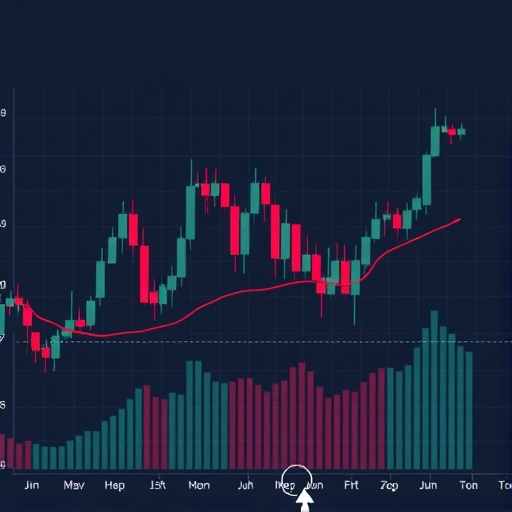
- Diversification: Spreading your investments across various commodity types or different futures contracts can mitigate the impact of sudden price fluctuations in a single asset. If you’re invested only in crude oil futures and geopolitical events cause oil prices to plummet, diversification into other assets like gold or equity index futures could help offset those losses. This strategy aims to reduce overall portfolio risk.
- Stop-loss Orders: These are pre-set price levels at which your position will be automatically sold to limit potential losses. For example, if you buy a crude oil futures contract at $80 and set a stop-loss at $78, your position will be automatically closed if the price drops to $78, preventing further declines. Stop-loss orders are a fundamental tool for capital preservation, though they don’t guarantee against large losses in rapidly moving markets.
- Position Sizing: This involves carefully adjusting the amount of capital you allocate to each trade based on the risk associated with that asset and your overall risk tolerance. Instead of making uniform investments, you might invest less in a highly volatile contract and more in a relatively stable one. Proper position sizing ensures that no single trade can cause catastrophic damage to your entire trading account, preventing the dreaded margin call – a demand for additional funds to cover potential losses or face forced liquidation of your position.
Remember, macroeconomic data, central bank policies, and geopolitical events are primary drivers of price movements across various futures types. Staying informed about these factors is part of effective risk management, as they can lead to sudden and significant market volatility.
Futures vs. Stocks & Options: Key Differences and Advantages
While often grouped under the umbrella of “investing,” futures contracts operate distinctly from traditional stocks and even options. Understanding these differences is crucial for determining if futures align with your financial goals and risk profile. Let’s compare them:
| Feature | Futures Contracts | Stocks | Options Contracts |
|---|---|---|---|
| What You Get | Binding obligation to buy/sell an asset at a future date; no ownership of underlying. | Ownership of a share in a company; voting rights (for common stock), potential dividends. | Right, but not the obligation, to buy/sell an asset at a set price by a future date. |
| Leverage | High; small margin controls large contract value, amplifying gains/losses. | Typically low (unless using margin loans, which have interest costs). | High; small premium controls large underlying value, but max loss is premium paid. |
| Expiration | Always have a specific expiration date; must be settled or offset. | Can be held indefinitely (unless company goes bankrupt or acquired). | Always have a specific expiration date; become worthless if not exercised/sold. |
| Shorting Costs | No borrowing costs to go short; easy to short sell. | May incur borrowing costs (locate fees, interest) for shorting. | No borrowing costs; shorting involves selling a contract you don’t own. |
| Pattern Day Trading (PDT) Rules | Not subject to PDT rules (for accounts under $25k). | Subject to PDT rules (requires $25k+ equity for frequent day trading). | Subject to PDT rules (requires $25k+ equity for frequent day trading). |
| Potential Loss | Can exceed initial investment due to leverage (risk of margin calls). | Limited to initial investment (unless using margin loans, which can lead to higher losses). | Limited to the premium paid (for buying options); can be unlimited for selling naked options. |
| Tax Efficiency | Favorable 60% long-term / 40% short-term capital gains tax treatment. | Long-term (held >1 year) vs. Short-term (held <1 year) capital gains rates apply. | Same as stocks, generally. |
| Complexity | Moderate-to-high; understanding contract specs, margin, settlement. | Low-to-moderate; understanding company financials, market trends. | High; understanding Greeks (delta, gamma, theta, vega), implied volatility, time decay. |
Beyond these comparisons, futures offer several distinct advantages:
- Direct Exposure: Futures provide direct exposure to underlying assets like commodities or indices, without the need to own the physical asset or a basket of stocks.
- High Liquidity and Tight Bid-Ask Spreads: Many futures contracts are highly liquid, meaning they can be easily bought and sold without significantly impacting their price. This results in tight bid-ask spreads, reducing trading costs.
- Nearly 24-Hour Trading: Futures markets often trade for nearly 24 hours a day during weekdays, offering flexibility and allowing traders to react to global events outside traditional stock market hours.
- Capital Efficiency: Due to leverage, futures are considered highly capital-efficient. You can control a large notional value with a relatively small amount of capital as margin.
- Portfolio Diversification: Futures can provide excellent portfolio diversification across asset classes not typically found in stock markets, helping to mitigate overall portfolio risk. For instance, hedging with stock index futures can be a strategy for a retail trader to mitigate portfolio risk during market downturns, corrections, or bear markets.
Your Roadmap to Becoming a Successful Futures Trader
Embarking on the journey of futures trading can be incredibly rewarding, but it demands diligence, continuous learning, and a disciplined approach. It’s not a get-rich-quick scheme, but rather a skill that is honed over time. Here’s a step-by-step roadmap to guide you:
- Learn the Basics Thoroughly: Before you place your first trade, immerse yourself in the fundamental concepts. Understand what leverage truly means for both gains and losses, how margin requirements work, the significance of contract sizes and tick values, and the inherent risks. There are many educational resources available from reputable brokers and exchanges.
- Identify a Market and Contract of Interest: Don’t try to trade everything at once. Focus on one or two markets that you understand or are passionate about. Are you interested in energy (e.g., crude oil, natural gas) due to geopolitical events, or agricultural products (e.g., wheat, corn) due to weather patterns? Perhaps equity index futures (e.g., E-mini S&P 500) if you’re keen on broad market trends. Research their unique drivers and historical behaviors.
- Open an Approved Futures Account: You’ll need to open a brokerage account specifically for futures trading. Reputable brokers offer platforms like NinjaTrader and provide access to various futures markets. Ensure the broker is regulated and provides the tools and support you need.
- Develop a Comprehensive Trading Plan: This is arguably the most critical step. Your trading plan should outline:
- Your Goals: What do you hope to achieve? Realistic expectations are key.
- Risk Tolerance: How much are you willing to lose on a single trade or in total?
- Market Analysis: Will you rely on technical analysis (chart patterns, indicators) or fundamental analysis (supply/demand, economic reports)?
- Entry and Exit Rules: Under what specific conditions will you enter a trade? When will you take profits or cut losses?
- Risk Management Strategy: Detail your approach to position sizing and how you will use stop-loss orders.
When developing your trading plan, a crucial decision involves your primary method of market analysis. Traders typically lean towards technical analysis, fundamental analysis, or a combination of both.
Analysis Type Focus Tools/Data Used Time Horizon Technical Analysis Price action, chart patterns, historical data Indicators (e.g., RSI, Moving Averages), candlesticks, volume Short to medium-term Fundamental Analysis Supply and demand, economic data, geopolitical events Government reports, news headlines, production forecasts Medium to long-term Choosing the right analysis approach aligns with your trading style and the specific futures markets you intend to trade, helping you to make informed decisions.
- Understand Contract Specifications and Margin Requirements: For every contract you consider, know its exact specs: underlying asset, contract size, tick value, trading hours, and especially the initial margin and maintenance margin requirements. These can vary significantly and directly impact your capital management.
- Start Small and Manage Risk Carefully: When you begin, trade with the smallest possible contract sizes. This allows you to gain experience and test your strategies without risking significant capital. Consistently adhere to your risk management plan, even when feeling confident. The temptation to over-leverage is high, but discipline is your best defense.
- Continuously Monitor, Adapt, and Stay Informed: The futures markets are influenced by a constant stream of information—economic reports, geopolitical events, supply/demand data. Stay informed and be prepared to adapt your strategies as market conditions evolve. Review your trades regularly to learn from both successes and mistakes.
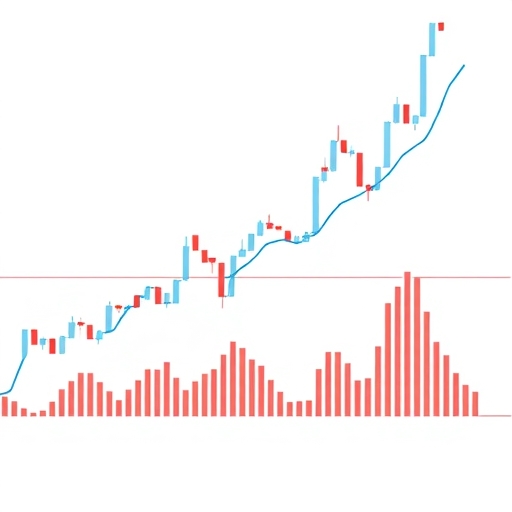
- Commit to Continuous Learning: The financial markets are constantly changing. Success in futures trading is an ongoing journey of learning and refinement. Read books, attend webinars, follow market news, and always seek to deepen your understanding of market dynamics.
- Practice with a demo account extensively before committing real capital to get comfortable with the platform and market dynamics.
- Review your trading journal regularly to identify patterns in your successes and failures, refining your approach over time.
- Stay updated on global economic news and geopolitical events, as these can significantly impact futures prices.
When selecting a futures brokerage account, consider the features and services offered by various trading platforms, as they can significantly impact your trading experience.
| Feature | Description | Importance |
|---|---|---|
| Charting Tools | Advanced charting with various indicators and drawing tools. | Crucial for technical analysis and identifying trends. |
| Order Types | Availability of market, limit, stop, OCO (One Cancels Other) orders. | Essential for precise entry/exit and risk management. |
| Data Feed | Real-time streaming market data. | Necessary for timely decision-making. |
| Customer Support | Responsive and knowledgeable support team. | Important for resolving technical issues or account queries. |
| Commissions & Fees | Transparent pricing structure for trades and data. | Directly impacts profitability, especially for high-frequency traders. |
A well-chosen trading platform provides the necessary tools and reliable data to execute your trading plan effectively and efficiently.
To further bolster your trading knowledge and resilience, consider these additional points:
Conclusion
Futures trading, while complex and inherently risky due to its leveraged nature, offers compelling advantages for portfolio diversification, risk management, and speculative profit generation. By understanding the intricacies of futures contracts, implementing robust trading strategies, and diligently applying risk management principles, traders can harness the liquidity and capital efficiency of these markets. Success in commodity futures trading hinges on continuous education, a well-defined plan, and a disciplined approach to managing both opportunities and potential losses. As we’ve explored, the world of futures is vast and offers distinct benefits compared to stocks and options, particularly in its capital efficiency and flexibility regarding day trading rules. However, the amplified potential for losses means it is not suitable for everyone.
Disclaimer: This article is for informational and educational purposes only and does not constitute financial advice. Futures trading involves substantial risk and is not suitable for all investors. You could lose more than your initial investment. Always consult with a qualified financial professional before making any investment decisions.
Frequently Asked Questions (FAQ)
Q: What is the primary difference between hedging and speculation in futures trading?
A: Hedging involves using futures contracts to reduce or offset the risk of adverse price movements in an underlying asset you already own or plan to acquire. Speculation, on the other hand, is the act of taking on market risk with the expectation of profiting from future price changes, often without intending to take or make physical delivery of the commodity.
Q: Why is leverage considered both an advantage and a risk in futures trading?
A: Leverage allows traders to control a large contract value with a relatively small amount of capital (margin), amplifying potential gains. However, this amplification works both ways; small adverse price movements can lead to significant losses, potentially exceeding your initial investment and resulting in margin calls, which is why it’s also a significant risk.
Q: How do futures markets contribute to price discovery?
A: Futures markets are highly liquid and transparent, with many participants buying and selling based on their expectations of future supply and demand. This continuous interaction of buyers and sellers, factoring in all available information, helps to efficiently determine the fair market price of a commodity for future delivery, a process known as price discovery.


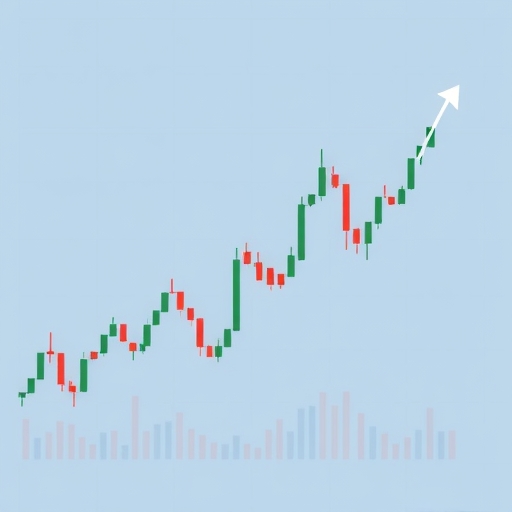
No responses yet